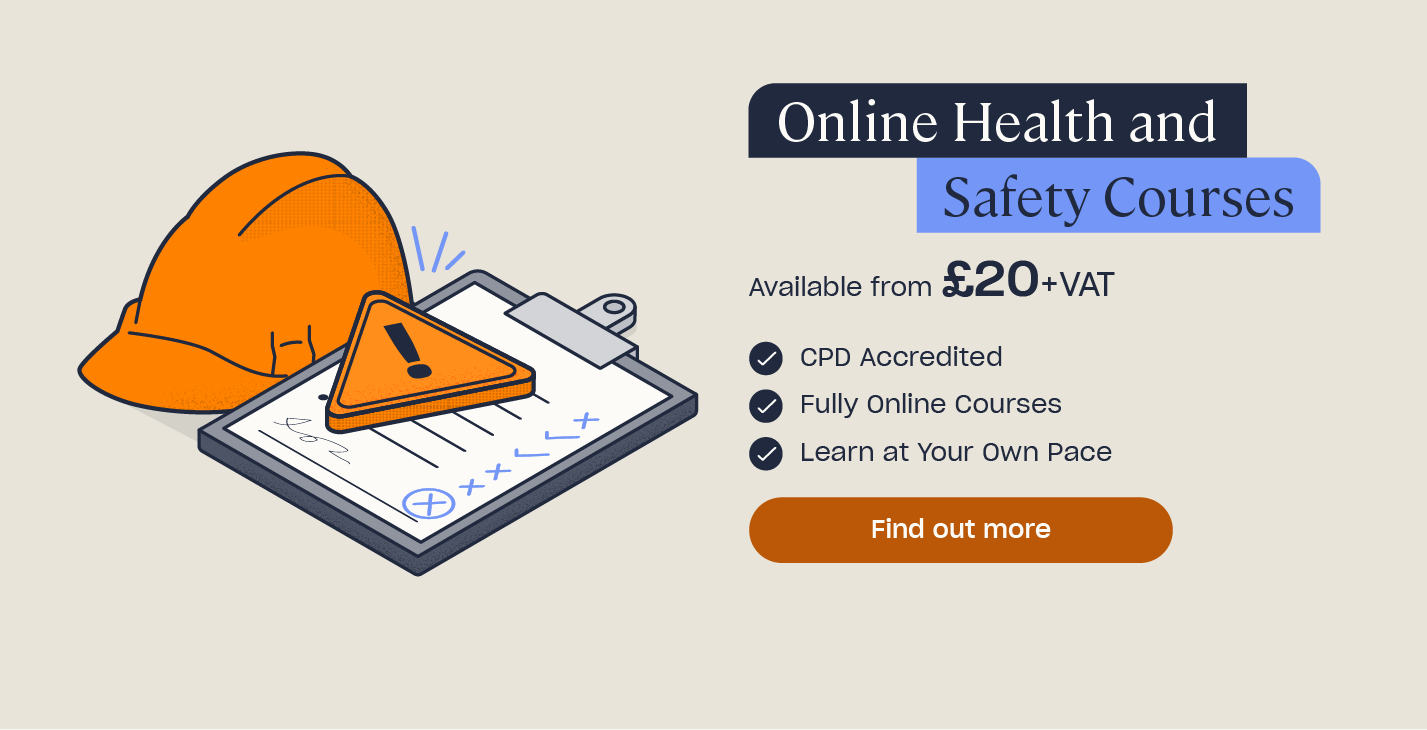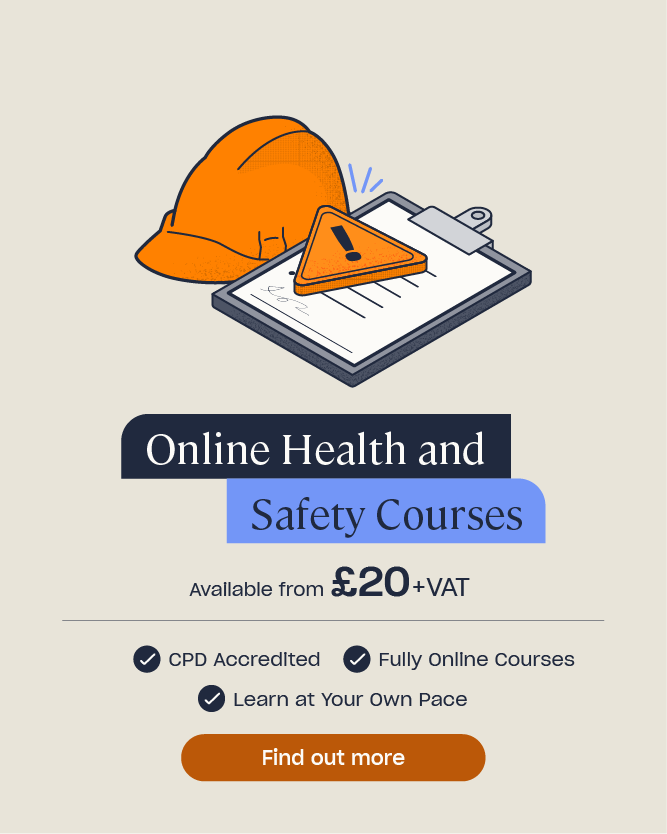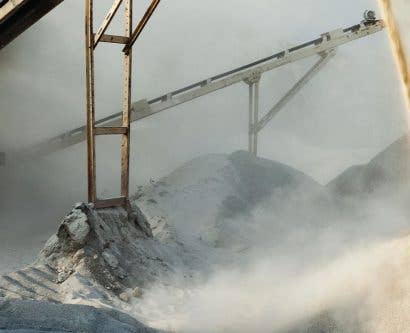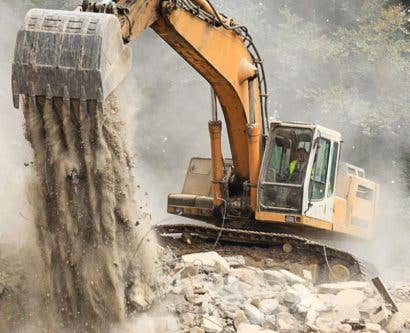What is a Competent Person?
Health and safety compliance is a necessity for all workplaces, no matter the sector or size of your business, and business owners and employers have a legal duty to ensure their workers remain safe from harm. To help them do this, they should appoint a competent person to provide them with advice and practical solutions. In this article, we’ll outline the responsibilities of a competent person, provide some examples of a competent person and explain how to become a competent person for your organisation.
What is a Competent Person in Health and Safety?
When talking about health and safety in the workplace, appointing a ‘competent person’ to help the organisation comply with health and safety law is something you often hear about – but what is a ‘competent person’?
Put simply, a competent person is someone who has extensive experience of the workplace, who understands the health and safety hazards within it, who has knowledge of health and safety law and who knows what needs to be done to keep people safe from harm.

The Management of Health at Safety at Work Regulations 1999 state that business owners must select ‘one or more competent persons’ to assist with health and safety compliance, but the level of competence required and the number of competent persons needed depends on your specific workplace and work activities: the higher the risk, the higher the level of competence.
A few examples of a competent person include:
- An expert in fire safety measures who ensures compliance with fire safety regulations.
- Someone with in-depth knowledge of a particular work activity.
- A supervisor on a construction site who’s worked in the role for 10+ years.
- An employee with extensive experience of operating specific machinery.
- A manager with considerable knowledge of health and safety legislation.
- A health and safety inspector who regularly identifies hazards as part of their role.
- A kitchen manager who regularly trains staff members in safety measures.
- A site manager with extensive knowledge of the workplace and its layout.
- A qualified first-aider who can easily recognise and manage health risks.
Competent Person Responsibilities
The business owner always has overall responsibility for health and safety in the workplace and a competent person cannot take on this duty. However, a competent person has a wide range of responsibilities in order to assist the business owner in meeting their legal obligations.
A competent person, because of their knowledge and experience of the workplace, is well-placed to provide business owners with advice on health and safety. Whilst their duties will be specific to their particular workplace, responsibilities of a competent person usually include:
- Identifying hazards in the workplace.
- Inspecting the premises, work equipment and work practices at regular intervals to identify any new hazards.
- Assessing the level of risk presented by each hazard through a risk assessment and reviewing and updating this at regular intervals.
- Offering ideas of practical control measures that will reduce the likelihood of harm.
- Keeping up-to-date with health and safety regulations and ensuring the workplace continues to comply with the law as regulations change or are updated.
- Communicating health and safety policies and procedures to other staff members and providing relevant health and safety training where required.
Want to Learn More?
Are you a competent person for your workplace? Then our range of online Health and Safety Courses – including Risk Assessment Training and Health and Safety Training For Employees – will help you to perform your role effectively and ensure your workplace complies with health and safety law.
How to Become a Competent Person
All types of organisations must comply with health and safety legislation and so must have a competent person – or persons – to help ensure these legal requirements are met.
The Health and Safety Executive (HSE) states that a competent person is ‘someone who has sufficient training and experience or knowledge and other qualities that allow them to assist you properly. The level of competence required will depend on the complexity of the situation and the particular help you need.’

Ideally, the competent person should always be someone within the organisation, as these people have unparalleled knowledge of the workplace, the work tasks and the hazards they present. If there is no-one suitable to be a competent person in-house, then you can outsource the role to an external professional, but this should be reserved for high-risk workplaces where specialist advice is more likely to be required.
To become a competent person for your organisation, there are three key traits you must possess:
- Experience
A competent person needs to have experience of the industry, the workplace and the work activities. Ideally, they’ll have worked for the organisation for some time and may have worked in different roles there, gaining experience of identifying, assessing and resolving risks. The competent person also needs to have in-depth knowledge and practical experience of the specific industry and its related hazards.
- Ability
A competent person must have the technical ability and competence to perform the role. This means they need to possess the skills to identify hazards and suggest practical solutions to control them. Competent persons don’t need to have a formal qualification but they must be trained well enough so they can perform the role effectively. The competent person also needs to be able to understand health and safety law and how this applies to the workplace, plus keep track of any changes to regulations.
- Attitude
A competent person must have a positive attitude towards health and safety compliance and actively promote a positive health and safety culture within the organisation. They need to be proactive about identifying and resolving hazards, confident to communicate policies and procedures to other members of staff and willing to put health and safety at the forefront of all work activities.
Appointing a competent person is an essential part of health and safety compliance and something that all business owners and employers should consider. A competent person is able to help the organisation meet its legal requirements, keep workers safe from harm and ensure hazards are dealt with quickly and efficiently. By appointing a competent person with the right experience and abilities, your workplace will ensure a positive health and safety culture where employee welfare is always the first priority.
Further Resources:
- Online Health and Safety Courses
- What are Safe Systems of Work?
- Risk Assessment at Work: Free Template











